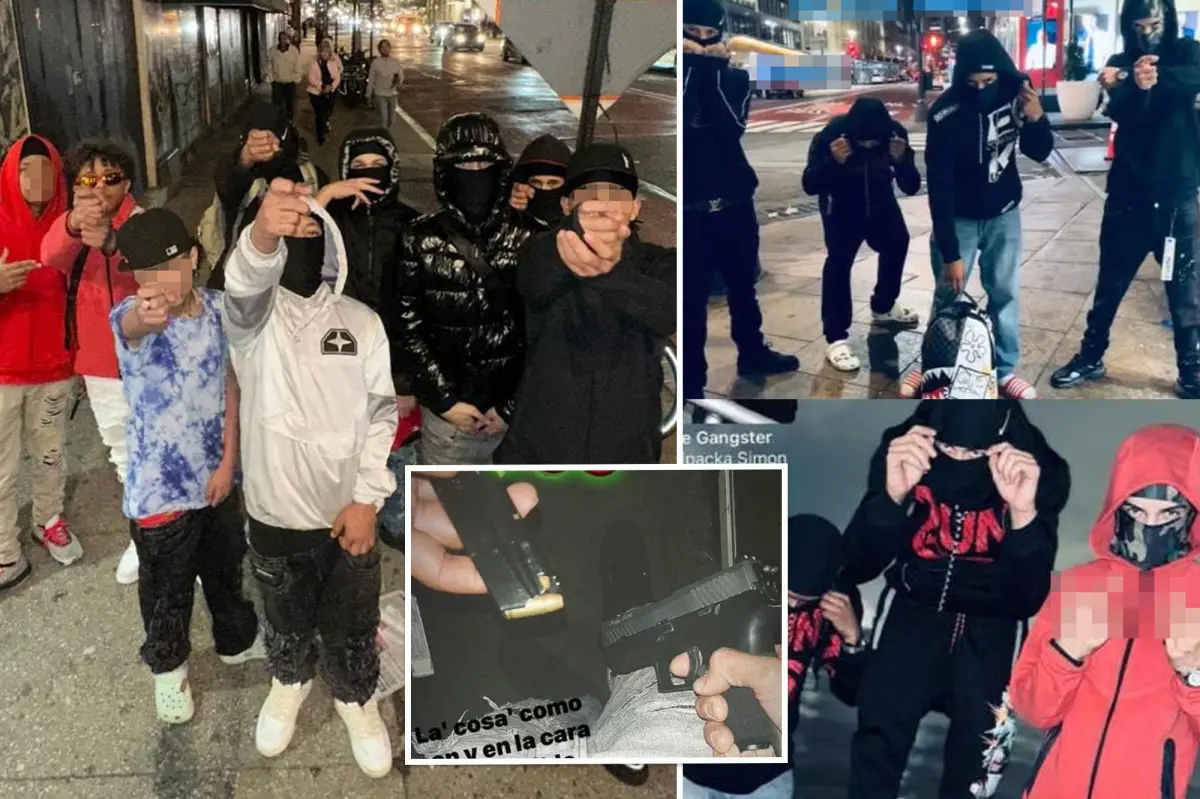A recent case involving a 15-year-old migrant and repeat offender from the gang “Los Diablos de la 42” has brought to light the complexities and challenges of managing juvenile crime in New York City. With ties to the Venezuelan criminal group Tren de Aragua, the gang has made Times Square its stage for a series of robberies and assaults, while the city’s juvenile justice system struggles to keep pace with the rising criminality.
A Migrant’s Journey to Crime
This Article Includes
The 15-year-old suspect entered the United States at Eagle Pass, Texas, in May 2023, seeking asylum with his family. After a brief detention, the family was released, with their immigration hearing scheduled for November 2024. However, in the intervening months, the young migrant found himself entangled with “Los Diablos de la 42,” a notorious youth gang based around the Roosevelt Hotel in Midtown Manhattan, an asylum-seeker arrival center.
By May 2024, the teenager had reportedly become an active member of this gang, which recruits young migrants into criminal activities. This criminal involvement led to a string of arrests over the next several months, with the young offender committing a variety of robberies across different parts of the city.
A Trail of Crime Across New York City
The gang’s activities have been widespread and brazen. The 15-year-old was arrested multiple times for violent robberies and thefts, often in busy areas like the Times Square district, Central Park, and subway stations. His list of offenses began on May 28, 2024, when he and two accomplices used brass knuckles to mug subway passengers in Queens. This was followed by a series of increasingly violent robberies, including knifepoint muggings and chain snatchings.
Despite these repeated offenses, the city’s juvenile justice system repeatedly released the suspect, as laws governing juvenile crime often prevent harsh penalties for offenders under the age of 18. It wasn’t until his eleventh arrest in October 2024 that the courts finally remanded him into custody.
The Challenges of Juvenile Justice
This case has highlighted significant concerns about how juvenile offenders, especially those involved in gang-related activities, are handled within the justice system. The 15-year-old’s repeated release despite his escalating criminal behavior underscores the challenges in enforcing consequences for young offenders. Laws designed to protect juveniles can sometimes be exploited, allowing dangerous individuals to return to the streets without facing serious repercussions.
The gang “Los Diablos de la 42” takes advantage of this system, recruiting children and teens into its ranks knowing that juvenile laws often favor leniency. Social media posts from these gang members reflect a lack of concern for the law, with many seemingly indifferent to the prospect of arrest.
The Impact on Times Square
The activities of “Los Diablos de la 42” have brought a new wave of fear to Times Square, a tourist hotspot that has long struggled with criminal elements. The gang’s name—meaning “The Devils of 42nd Street”—has become synonymous with violent street crime, particularly robbery, assault, and theft. Many of these crimes occurred in broad daylight, in front of shocked residents and tourists alike.
The Roosevelt Hotel, once an iconic New York landmark, has become a focal point for the city’s asylum-seeker crisis. The city has spent billions in migrant housing costs, with the hotel serving as temporary shelter for asylum seekers, including the young gang members causing havoc in the city.
An Uncertain Future for the “Little Devil”
The juvenile offender’s latest arrest, a knifepoint robbery outside the H-Yard Deli on September 30, 2024, proved to be a turning point. Caught on surveillance video, he was apprehended shortly afterward by the NYPD. This time, however, a judge deemed it appropriate to keep him behind bars.
In court, the 15-year-old sobbed as Judge Betsey Jean-Jacques ruled that his release would be inappropriate. For now, the young gang member remains in custody, but how long he will stay there remains uncertain. The migrant crisis, coupled with lenient juvenile crime laws, leaves open questions about how these cases will be handled in the future.
Conclusion
The case of “Los Diablos de la 42” reflects the broader challenges New York City faces in dealing with migrant-related crime, juvenile delinquency, and the strained asylum system. With vulnerable youth being recruited into gangs, and a justice system ill-equipped to handle repeat juvenile offenders, the city must confront the growing intersection of immigration and crime. Whether this case will prompt meaningful changes to the law remains to be seen, but for now, Times Square remains under the shadow of the “Little Devils.”

